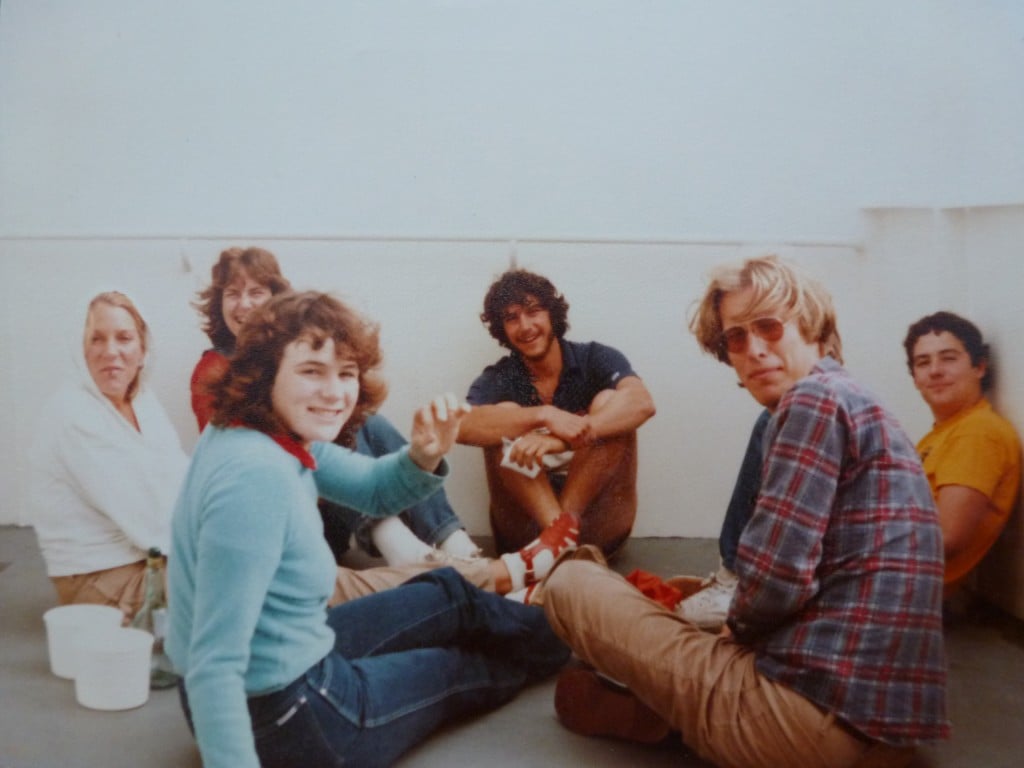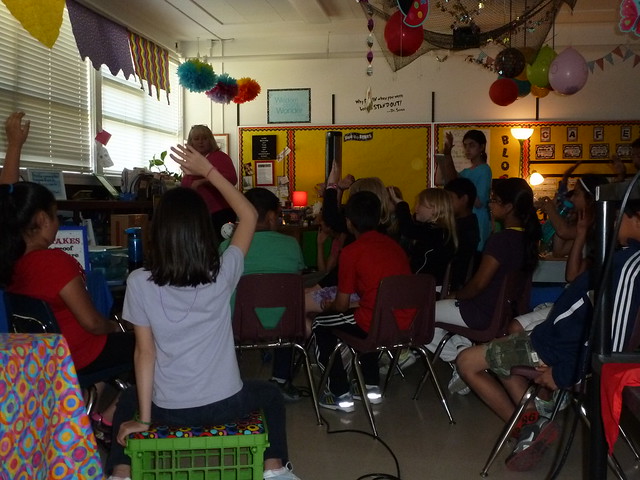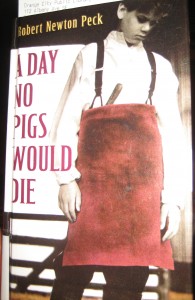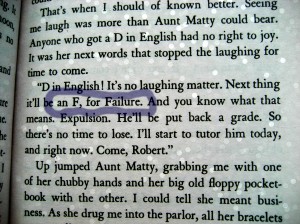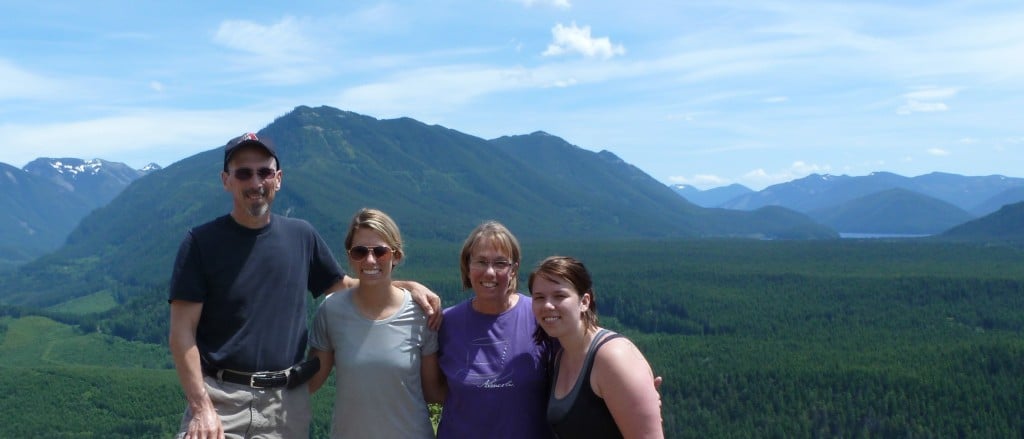
I just finished a two-week road trip, where I saw special people in my life — my daughter — first time I’ve visited her in her new city; a pastor/mentor who married my husband and me and his sweet wife; a nephew and his wonderful bride and young son; and twelve members of my online professional learning network, including two spouses.
It was amazing to me how community happened so quickly when I was with these friends and family. I thought it was interesting, though, of all the people above — 20 are listed — only three of them had I previously met face-to-face.
As a result of that observation, I’ve had many thoughts about connections and community.
Background
Yesterday, when we drove by the turnoff for Kalispell, Montana, I thought of a young woman from that town. I had connected with her and other new friends on a ferry ride through the inside passage of Alaska over 30 years ago. We had an amazing time with this little group of twenty-somethings from Rhode Island, Montana, and California, connecting as young people have always done. We shared meals, slept under the stars on the deck of the ship, took pictures, played games, and shared rich conversation for hours. They even had a birthday party for me with a candle on a slice of banana bread. After three glorious days on our poor man cruise ship, we said goodbye and parted ways. I believe we did exchange addresses, but we were young and transient, and the connections were lost.
Then I thought of fast-forwarding that experience thirty years. If my children took that same ferry boat ride, they would spend three days doing the same things we did. However, they would also make online connections, following each other on Facebook, Instagram, Twitter, Snapchat or the social-medium-du-jour before the ferry traveled very far down the passage. Then, when they said goodbye, if they so chose, they would be able to maintain and even grow those relationships at the click of a button.
These last two weeks have confirmed what I believe about online connections. Contrary to the opinion of some, the Internet does not ruin real relationships, for me it is bringing me closer to people.
Gallit & Hugh
I had butterflies in my stomach just before we arrived. I began giving my daughter and husband a little background about Gallit’s and my friendship. I reminded them about how I had come to know her. I think my family was nervous because they didn’t have the benefit of knowing Gallit for two years in online collaboration, Facetime, Google Hangouts, Open Spokes, Genius Hour, and so much more.
As soon as we walked into their beautiful home, Gallit and Johnny made us feel like friends. The butterflies went away, and the friendship and laughter took over. They were amazing hosts!

The next day I got to go with Gallit to her Grade 6/7 room at Georges Vanier Elementary School. The staff was amazing. I met Gallit’s teaching partner, Hugh McDonald, in the office. Hugh is one of the very first people I started connecting with on Twitter. Their 48 students, though dangerously close to a summer break, were engaged, polite, creative, and fun to be around. They were amazing!
It was a great day to visit, as two students completed their genius hour project before school by “making peoples’ day.” Simran, Blea, and a dozen classmates held up signs that made many people smile, laugh, and honk their horns. It was definitely a great start to my day. Watch more here:
I also learned about Nigeria from a student who was doing his genius hour presentation, watched a math lesson, and enjoyed (and added to) the pandemonium of students finishing the task of taking ten digital photographs for fine arts.
 The best part of the morning was seeing the students and teachers interact. Hugh and Gallit are co-learners with their students. Children and teachers can make mistakes together in this safe place. Students were trusted to make good learning choices, and they did. It was a delightful place to be.
The best part of the morning was seeing the students and teachers interact. Hugh and Gallit are co-learners with their students. Children and teachers can make mistakes together in this safe place. Students were trusted to make good learning choices, and they did. It was a delightful place to be.
Did you know Hugh and Gallit teach their grade 6/7 students every subject except music and French? That is, they teach ALL content areas, P.E., technology, AND fine arts. Maybe more. Amazing! They get two prep periods in a week — 100 minutes total. Those were just a couple of the differences I noticed. (I may have to write another blog post about that!)
Another delight was watching the principal, Antonio Vendramin, interact with students and staff. The first thing in the morning, he was out directing traffic and supervising the crosswalk. Then he took photos for Hugh and RT’ed about the “Honk If You Love Someone” event.
MT @hughtheteacher: @KelliHolden Sneak peek! "Honk if U Love Someone" huge success @georgesvanier36 #geniushour pic.twitter.com/5V8uJK29a2
— Antonio Vendramin (@Vendram1n) June 17, 2013
Later he was photographing all the Grade 7’s for their graduation ceremony slide show. Then I saw him in the hallway reading with a small circle of young learners. After school he was again on duty in the crosswalk as students were picked up. Next, he helped a teacher tape her portion for a music video the staff was making. I was not even there all day, but I saw so many hands-on interactions with parents, staff, and children. He is great.
Robyn
When I drove down the road after lunch (borrowing Gallit’s car) to Robyn’s school, I went right to the office, but I couldn’t help but notice Robyn, pretty in pink, standing near the doorway of her classroom. She came out and gave me a big hug. No need for introductions. We were already friends–just hadn’t seen each other in person yet.
I had a great afternoon learning from Robyn and her amazing grade 3 and 4s. They went outside to read some good books, played Yahtzee, Skyped with author Howard Binkow, responded to comments from Mr. Binkow on their blogs, enjoyed a surprise–the video they made was featured on #92 Wonderopolis–and more. They are amazing kids!
Tweetup
A dozen educators met up after school at Big Ridge in Surrey. I met all of these folks for the first time this week. What fun to meet people I have been tweeting with, following their classrooms, reading their blogs, vlogging with, and more! Karen, Valerie, Antonio, Hugh, Tia, Jas, Robyn, Anne-Marie, Jodi, Linda, and Gallit all work in School District 36 in Surrey, British Columbia. With over 5,000 teachers and 120 schools, you may not be surprised to learn that some of them were actually meeting face-to-face for the first time too.

Sheri
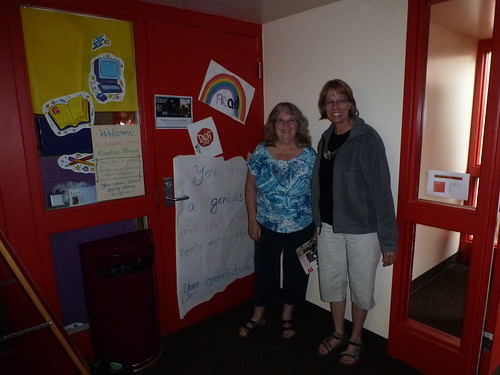 We drove up to one of my favorite poet’s house in the rain. Below the dam, behind the Chevron, past the green building, blue house on the corner, and there was Sheri, tiptoeing through the rain and wet grass to greet us.
We drove up to one of my favorite poet’s house in the rain. Below the dam, behind the Chevron, past the green building, blue house on the corner, and there was Sheri, tiptoeing through the rain and wet grass to greet us.
She took us on a tour of her community, her school, her inspiring classroom, and the giant dam practically in her front yard.
Scott and Sheri fed and lodged us. They fed us some more. More food, but, perhaps even better, they fed us with beautiful conversation and artistic eyefuls around their lovely home. It was great to finally see my friend in person.
As we drove back to Iowa, Keith and I couldn’t help but reflect on the rich times we had with so many people. Not only did we get to spend time with our daughter, a significant mentor, and a nephew and his family, but we connected in community with wonderful people who we never would have known without Internet connections.
I am better because of my connections.
